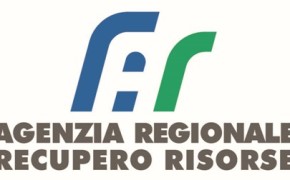Incentivize design and implementation of EE measures, to reduce energy consumption in buildings, promote the transition to a low-carbon economy for SMEs
Tuscany Region, by implementing the ERDF 2014-2020, issued 4 calls to incentivize enterprises’ investments in EE of buildings between 2014 and 2017.SMEs are different compared to big companies and public sector in implementing EE measures. For SMEs the cost of energy is often not very relevant compared to other costs connected to the core business and therefore SMEs do not take the economic opportunity to intervene to reduce energy consumption. If we want to promote the transition to a low-carbon economy for non-energy-intensive SMEs it is necessary to incentivize the design and implementation of EE measures, also to reduce the energy consumption in buildings within which the economic activity takes place, not only in the production process. The calls also financed the production of energy from renewable sources (thermal and electrical, and from cogeneration), combined with EE that remains the primary action. The health and safety of the workplace is improved, considering that the incentives are extended to the removal and disposal of asbestos. The actions of SMEs are incentivized through a non-repayable contribution. The main stakeholders involved are the Trade Category Associations who promoted tenders by carrying out initiatives and workshops throughout the region in cooperation with Tuscany Region who supported SMEs in preparing the documentation required by tenders. The beneficiaries of the practice are SMEs, of industry-crafts-cooperation-tourism-trade-services-culture
Resources needed
Total financial resources used by the 4 calls to incentivize the EE in SMEs: 14,667,675 €.
Average contribution per intervention: 59,380 €, 35% respect to the expenditure deemed eligible.
Total investments of SMEs: 41,918,257 €.
3 Tuscany Region staff required to manage the calls
Evidence of success
The performance in terms of energy savings and reduction of C02, as a result of the EE measures in buildings, show the relevance and effectiveness of the action:
- 247 EE actions financed
- 4.518 toe of energy saving
- 9.353 ton of estimated CO2eq emissions avoided
Carried out installations:
- 90 solar photovoltaic systems, for a total of 6,531 kW installed and an estimated production of 7.8 million kWh
- 30 solar thermal systems
- 49 actions carried out to remove asbestos
Difficulties encountered
SMEs have difficulty in obtaining information that incentivize EE: It is necessary to improve promotional activities on EE.
SMEs wishing to participate in tenders must submit many documents and rely on experts for their preparation: it is necessary to simplify procedures for participation in calls
Potential for learning or transfer
The call for tender to incentivize enterprises’ investments in EE in buildings represents a tool for implementing regional, national and European policies aimed at encouraging the transition to low carbon emissions in SMEs. Actions to limit the energy consumption of buildings are incentivized through a non-repayable contribution.
The non-repayable grant reduces the investment of an SME and is more attractive than other benefits.
Many of the SMEs participating in the tenders that obtained the incentive have carried out EE actions that otherwise would not have been realized.
The 2014-2020 ERDF programming has allocated resources to low-carbon projects for SMEs, including buildings: such projects are to be considered positively and easily replicable.
This practice should be considered because it combines actions on the SMEs’ building to improve EE with the production of energy from renewable sources and interventions, in addition to health and safety measures such as asbestos removal.
Please login to see the expert opinion of this good practice.
Tags: Access to finance, Buildings, Efficiency, Energy, Renewables, SME, Structural Funds








